SC Rewind: Years Ago - 1950s
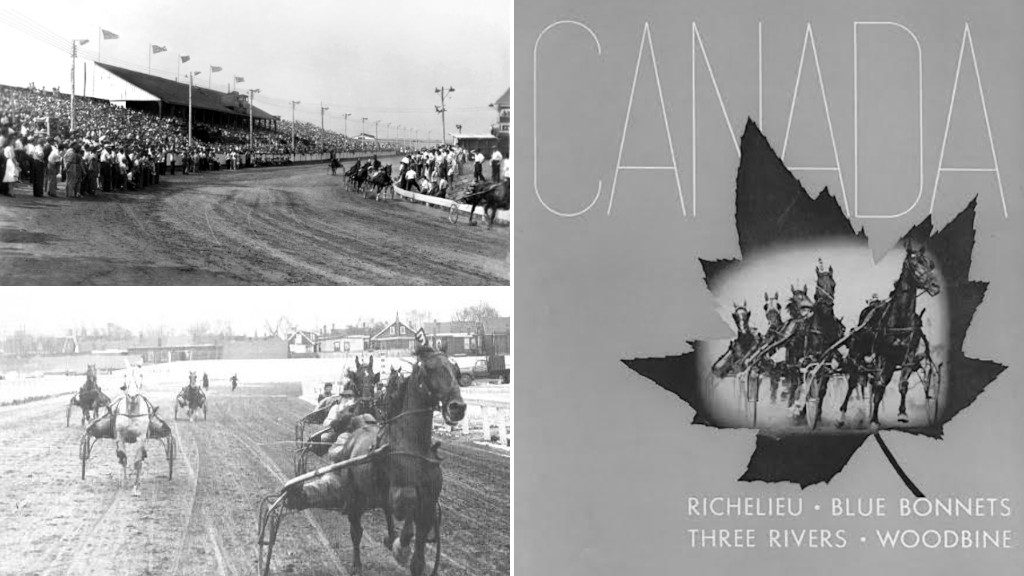
This week's Rewind is the regular monthly feature 'Years Ago.' This time it's a trip back to the decade of the 1950s. Robert Smith has found some old stories of what was happening back then and quite a few pictures as well. The Fifties was a great era of growth, excitement and memorable happenings in the sport of harness racing. It was a time of gradual change from a country fair activity to a major league sport.
1950 - Old Home Week Draws Huge Crowds
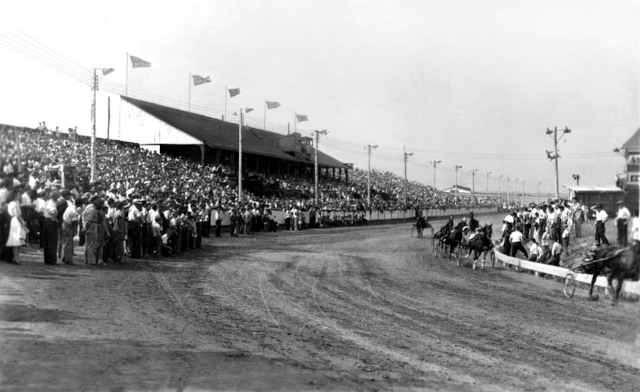
A view of the huge crowds attending the races at Old Home Week. Crowds often spilled out onto the track as people wanted to be as close as possible to all the action. As the picture shows the infield was a popular spot as well.
This year's week-long Old Home Week at Charlottetown Driving Park drew exceptionally large crowds to the afternoon races as well as those held under the lights in the evenings. Huge enthusiastic crowds were the norm which warranted the statement "with a crowd of over 7,000 enthusiastic racing fans packing the stands and grounds like sardines, exceeding the afternoon meet by over a thousand."
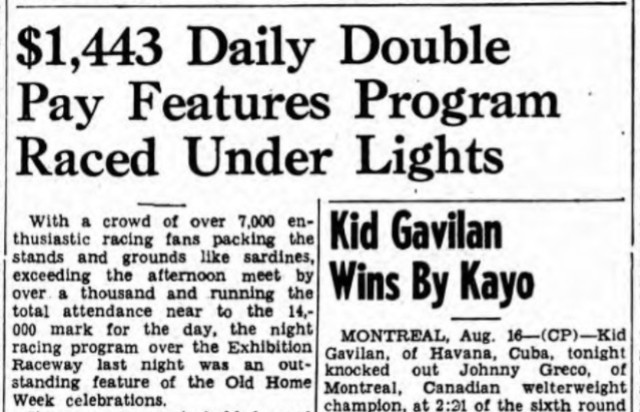
Clipping courtesy of Guardian Of The Gulf. Be sure to look below for trivia question related to a portion of this item.
While many highlights happened on the track, one joyful fan went home a bit richer after the Wednesday evening races were over. Hugh MacDonald of 24 Alexander Drive in Charlottetown held the only ticket with the winning combination on the Daily Double to collect the sum of $1,443.30 for his two dollar bet. The winning combination of Miss Judy Dale and Josedale Hoosier created the huge payoff. In today's dollars that ticket was worth approx. $17,700.
Note: It is probably no coincidence that someone named MacDonald might have a good chance of being the holder of the winning ticket. I wonder how many from "the clan" were there each day?
1953 - Hazel Park Opens First Five-Eighths Mile Track For Harness Racing
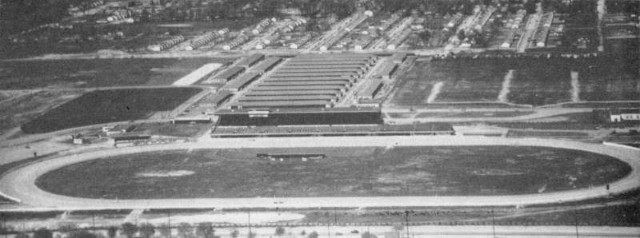
On May 7, 1953 Hazel Park Raceway, located just north of the city of Detroit, introduced the first North American track that was of the five-eighths mile distance. The track itself had existed prior to this and hosted thoroughbred racing for a time before introducing harness racing. The new distance was immediately adopted by horsemen who for the most part had always competed on the traditional half-mile tracks. Races were started on the backstretch and of course finished in front of the grandstand. This new system allowed the horses to have a fairly long straightaway before encountering the first turn.
Jimmy Wingfield, the man who groomed the famous Greyhound, landed the first race on the opening night program with the freelegged Calumet Wayne, owned by Delbert Smith, Galveston, Ind. Despite a rain soaked day and early evening, more than 10,000 people showed up to help open the new track. Wayne "Curly" Smart, trainer and driver of the powerful Castleton Farm stable, dominated the driver's colony and eventually won the dash winning title with 32 victories.
The emergence of the Hazel Park operation gave Michigan three major tracks in the Detroit area joining the pioneering Northville track as well as the new ultra-modern Wolverine operation which had just debuted in 1952. The opening meeting at HP, which included 33 nights of racing, was a huge success and attracted nearly 200,000 fans who wagered more than $10,300,000, a new mark for the Wolverine State.
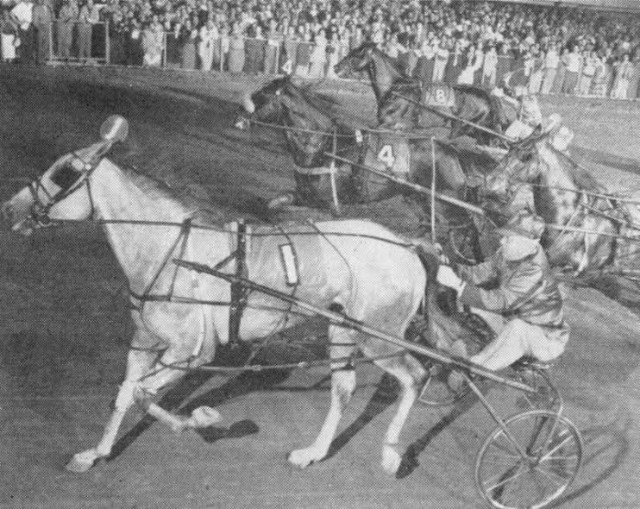
A Canadian horse, Ginnie Lee C. owned by George Sherman of Rodney, Ont. and driven by Floyd Milton, turned in one of the fastest miles of the inaugural Hazel Park meeting when she stopped the timer in 2:03 2/5. It was a new lifetime mark for the grey mare and it was not far off the fastest time recorded at the new sized track. (Harness Horse photo)
Note - A very long time ago I had the opportunity to meet Mr. Sherman and spend some time visiting with him about his lifetime involvement in harness racing. His mare was pretty widely known and one winter he took her all the way to California to race.
1954 - Star Volo Tops Reader Poll
A reader poll conducted by the Canadian Sportsman resulted in the naming of the five-year-old pacing gelding, Star Volo p, 4, 2:02 1/5 h, by High Volo 2:03, dam Amarylla Direct, by Billy Direct p, 4, 1:55, Canadian Horse of the Year. "The Steam Engine," as he was popularly known by fans across the border, is owned by J. P. Lachapelle of Joliette, Quebec, and was most capably trained and driven by Francois "Frenchy" LeBoeuf. Earning more than $20,000, Star Volo won 21 of his 33 dashes, plus five seconds, four thirds and one fourth. Among his triumphs this year was a 2:04 mile at Richelieu for a track record. In the $15,000 Invitational Pace at Richelieu, Star Volo was only a length off when third in 2:03 to Philip Scott and Wilmington's Star, with such aces as Chuck Volo, Hillsota, Egan Grattan, Ferman Hanover and Adio Abe behind him. At Richelieu he had six wins from 2:04 to 2:06 and at Blue Bonnets racked up a quartet from 2:04 4/5 to 2:06.
1955 - Dufferin Park Sold -- Winter Meet Cancelled
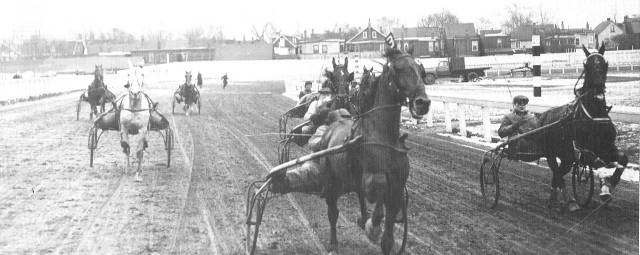
This old photo shows the finish of a race at Dufferin Park taken in 1949. The track was nestled among a city neighbourhood on Dufferin Street between College and Bloor.
The following article came as bad news to fans of winter racing at Toronto's Dufferin Park. It was an annual ritual for many people to regularly attend the afternoon races at this fabled track. My late father often attended races there and enjoyed the atmosphere and the meals that were a part of the experience. I believe 50 cents purchased some pretty tasty dishes.
From. Oct 26, 1955 Harness Horse:
"Dufferin Park, where hundreds of horsemen from Canada and the United States have raced throughout the winter for more than 50 years, was sold recently by Fred Orpen to Toronto Racing Securities Ltd., for a reported $4,000,000. The original sale price was reportedly $4,500,000, but was decreased by $500,000 when the prospective purchasers were reluctant to take over eight houses and a factory building on the Dufferin site.
"The sale included both the Dufferin and Long Branch race tracks, and 10 racing charters, eight of which provided for both harness and running races and two that provided for harness races only.
"In a statement concerning the purchase, Toronto industrialist E. P. Taylor, head of the purchasing group and Canada's leading Thoroughbred owner, stated that he hoped the Ontario Jockey Club would take up the charters on the tracks after the purchase is completed and continue racing.
"Racing was inaugurated at Dufferin soon after the turn of the century. At that time it was conducted on Saturday and Mondays only, with free admission on the latter day. Later the meeting was increased to three days a week, and then finally to a full six days. For the last several years a meeting of 100 days has been held each year between November and March. The sale also spelled the end of thoroughbred racing at both tracks at the end of the 1955 season.
"In addition to its popularity as a winter racing site, Dufferin was also noted as a market where many horses were sold, purchased and traded during the meeting."
1957 - Harness Horse Magazine Recognizes Canadian Racing
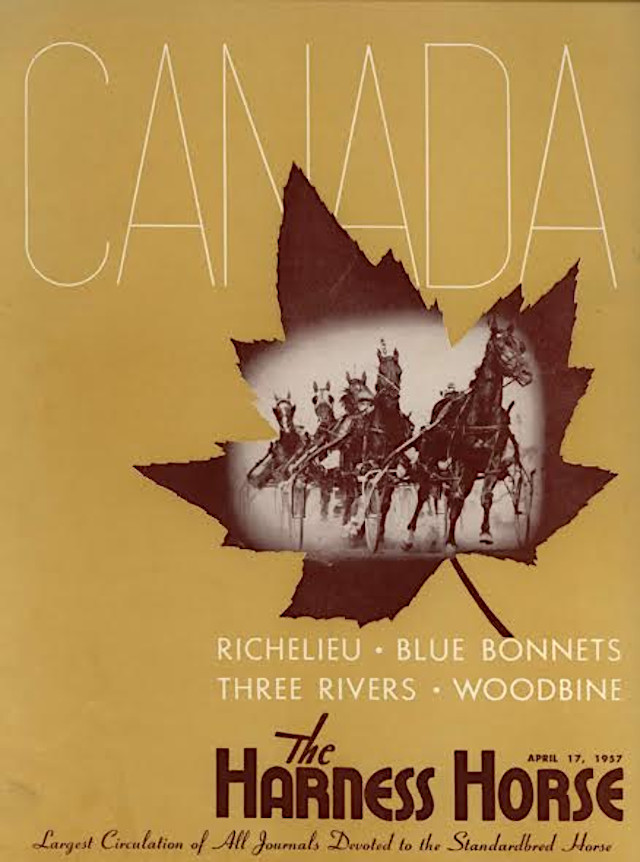
The April 17, 1957 issue of the noted U.S. racing journal The Harness Horse offered a special salute to Canadian harness racing which was growing in popularity each year. The following passage was included regarding the above cover.
"This week we salute our good neighbor to the North - Canada. The sport of harness racing has enjoyed a long and hearty popularity across the border.
"Canadian horses and horsemen have contributed greatly to our own trotting and pacing events. In recent seasons interest has quickened with modern tracks, featuring night racing, offering greatly increased purses. Canadian sportsmen are on hand at all the major U. S. sales to recruit new stock for their own race tracks. It is a two-way street, too, there is plenty of harness horse speed bred and raised in Canada, and a lot of it shows up on our own tracks. The bond of devotion to the harness horse sport and fraternity is a major link between our two countries."
Quote For The Week: Explained by a logo. "Covers Prince Edward Island Like The Dew"

Who is It?
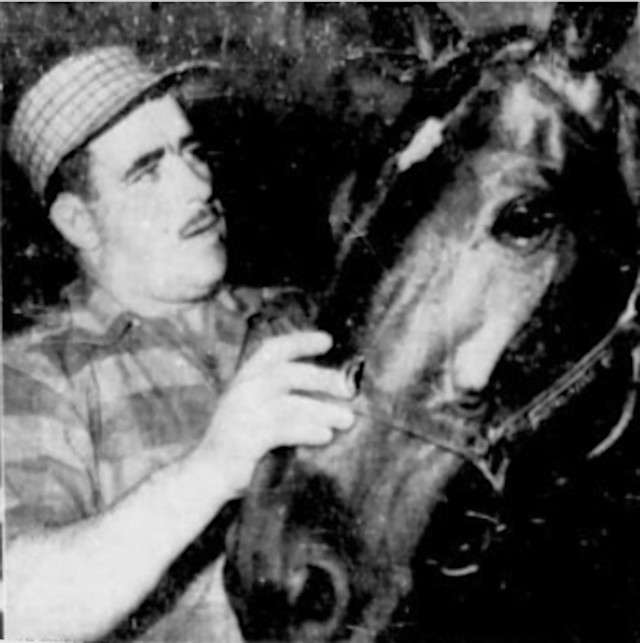
Can you correctly identify this gentleman pictured with a horse from his stable? His given name, nickname or last name will suffice. He was once a top driver on the Montreal scene as well as in the U.S. (Photo courtesy of Montreal Gazette archives)
Who Else Is It?
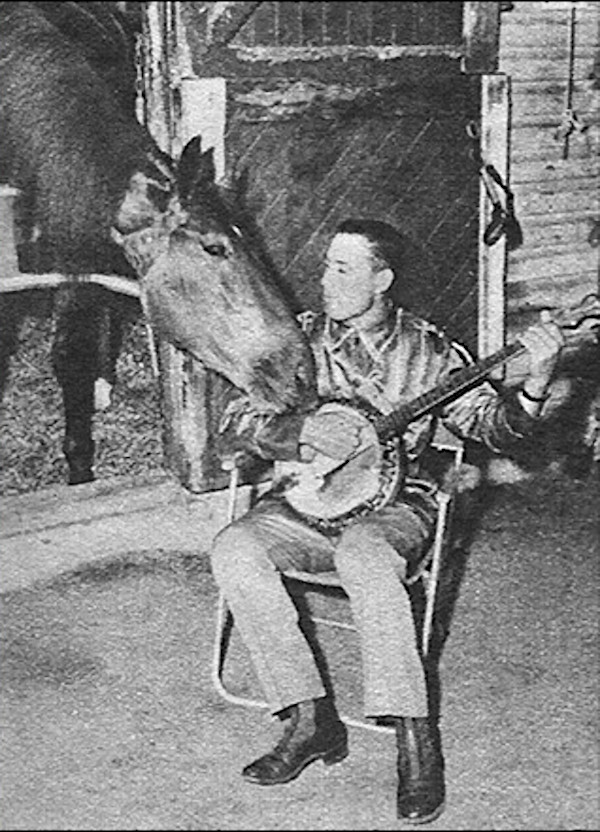
This photo is somewhat connected to the 1955 piece above regarding Dufferin Park. The gentleman pictured above was a regular at Dufferin for many years. It looks like he may have been a banjo picker in his spare time. Can you put a name on him? He was around for a very long time.
Boxing Trivia: In the newspaper clipping related to the 1950 races at Charlottetown a small piece includes some boxing news of the day. Is there anyone in the reading audience (besides me) that recalls the nickname of the punch that the great Cuban boxer Kid Gavilan was famous for throwing? The rules state that you are not allowed to look it up and if so you will be disqualified!


This week's pictures were ....
This week's pictures once again posed no problems to our panel of experts. In the "Who is it?" photo was Francois "Frenchy" LeBeouf, longtime driver and trainer at the big Montreal tracks. In the "Who Else" photo was Harold McKinley, a gentleman who enjoyed a very long career in the sulky, much of it spent with the Armbro stable.
Mark McClennan was the sole responder on the boxing trivia question and he was absolutely correct when he identified Kid Gavilan's signature weapon as a "Bolo Punch". He is said to have never been knocked out or even knocked down in his entire lengthy career.
rewind
I remember seeing Francois driving a horse named Ruby Duby Doo at Rideau. Or am I hallucinating?
Francois Leboeuf was a top…
Francois Leboeuf was a top Driver trainer in Montreal in the fifties. I remember him having two F.F.A. Pacers. He had Star Volo in the early fifties that raced against and beat Hall Of Fame horse Bat State Pat. And he had a horse called Devastor that was a F.F.A. Pacer In the late fifties. Devastor raced against and beat Hall Of Fame pacer Chief Maid and Senator Spangler who were two top F.F.A. Pacers at the time. Those Montreal memories for me in the late fifties are great memories for me. Thanks Robert.
Who is it?
Francois Leboeuf
rewind
Guesses:
Francois Leboeuf
Harold McKinley
Bolo punch
Guessing. Marcel Dostie, …
Guessing. Marcel Dostie, Harold McKinley hmm jab.